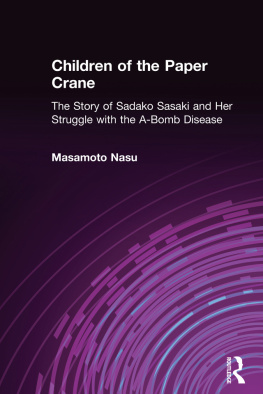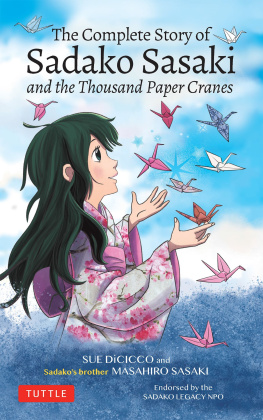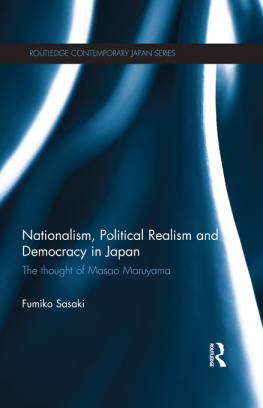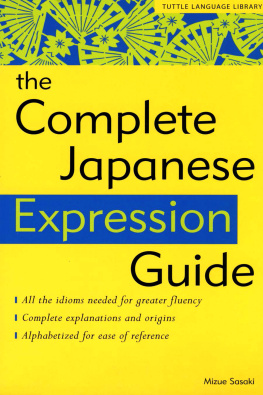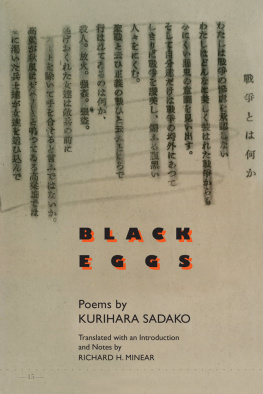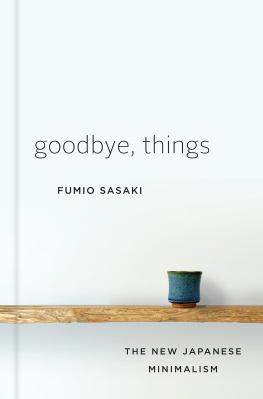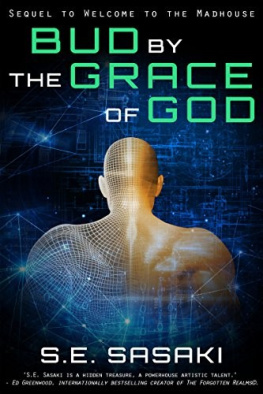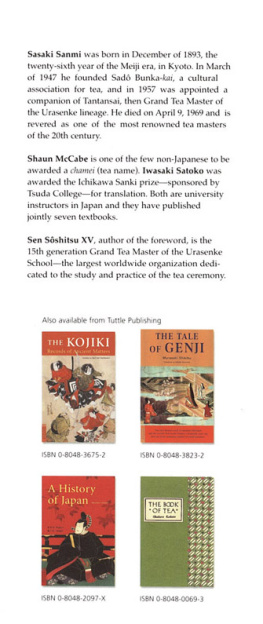First published 1991
by M.E. Sharpe.Inc
Published 2015
by Routledge
2 Park Square, Milton Park, Abingdon, Oxon OX14 4RN
711 Third Avenue, New York, NY 10017, USA
Routledge is an imprint of the Taylor & Francis Group, an informa business
Copyright 1991 by Taylor & Francis
No part of this book may be reprinted or reproduced or utilised in any form or by any electronic, mechanical, or other means, now known or hereafter invented, including photocopying and recording, or in any information storage or retrieval system, without permission in writing from the publishers.
Notices
No responsibility is assumed by the publisher for any injury and/or damage to persons or property as a matter of products liability, negligence or otherwise, or from any use of operation of any methods, products, instructions or ideas contained in the material herein.
Practitioners and researchers must always rely on their own experience and knowledge in evaluating and using any information, methods, compounds, or experiments described herein. In using such information or methods they should be mindful of their own safety and the safety of others, including parties for whom they have a professional responsibility.
Product or corporate names may be trademarks or registered trademarks, and are used only for identification and explanation without intent to infringe.
Library of Congress Cataloging-in-Publication Data
Nasu, Masamoto, 1942
[Orizuru no kodomotachi. English]
Children of the paper crane: the story of Sadako Sasaki and her struggle
with the A-bomb disease / Masamoto Nasu: translated by Elizabeth W. Baldwin,
Steven L. Leeper, and Kyoko Yoshida.
p. cm.
A North castle book.
Previously published: 1991.
ISBN 1-56324-801-8 (alk. paper)
1. Sasaki, Sadako, 1943-1955.
2. Leukemia in childrenPateientsJapanHiroshima-shiBiography.
3. Atomic bomb.
4. Hiroshima-shi (Japan)HistoryBombardment, 1945.
I. Title.
RJ416.L4S27613 1996
362.1'98929419'0092dc20
[B]
96-2047
CIP
ISBN 13: 978-1-56324-801-6 (pbk)
This translation is the first detailed English version of the story of Sadako Sasaki. Sadako experienced the atomic bombing of Hiroshima when she was two years old, Masamoto Nasu was three. Sadako died at the age of twelve and became the inspiration for a monument to memorialize the many children struck down by the bomb. Nasu became a best-selling author of humorous children's books. This account of Sadako's death and the movement to build a memorial statue is nothing like his other works. What made him write it?
Although Sadako and Nasu grew up in a city gripped by harrowing memories, the reality of that cataclysm was elusive to those who had survived it as small children. Nasu has said he wanted to know more about the massive tragedy towering in his past and to create a record in his own voice for his own children. But his curiosity went beyond the bombing itself.
Though several other books about Sadako have been published in Japanese, they focus on what Nasu calls the "beautified tragedy" of her death. Nasu is the only author to deal seriously with the statue movement. He had donated to the movement when he was in junior high school and then found himself attending high school with Nobuhiko Jigo and other members of Sadako's class. He discovered that Nobuhiko and the others were strangely reluctant to discuss that part of their past. Why were they so reticent about a project that had dominated their junior high years and brought them a measure of fame? The author's curiosity about the movement became a part of his motivation to tell an important story in his city's past.
Fortunately, Sadako's family and the other key figures talked to him freely. Because they believed Nasu should try to communicate their point of view accurately, even Sadako's classmates broke their silence for him. For two years Nasu researched the girl, the movement, and the times in order to set the story down before time could erode the memories further.
Like thousands of other survivors of Hiroshima and Nagasaki, Sadako was struck down by radiation-induced disease at a time when the bombings themselves were already history. Always energetic, this young girl refused to abandon her enthusiasm for life just because she happened to be sick. As she lay in her hospital bed, Sadako remained cheerful and kind, and, of course, she folded her paper cranes. She was also careful not to give others pain by letting them know she knew she was dying. But there were others who also died beautifully and courageously. What made Sadako Sasaki the inspiration for a monument that attracted attention around the world?
A coincidence of people, events, and timing combined to place Sadako at the center of a movement. Her teacher, Tsuyoshi Nomura, molded his class into a tight group that valued looking after its own. Sadako's death left them with an intense sense of emptiness, a need to express something to her. At just the right time, that group was discovered by Ichiro Kawamoto, a young man with a burning mission. Kawamoto felt it was time for Hiroshima to remember the children she had lostand he was not the sort to wait for more powerful people to see the need. Sadako's classmates, so strongly bonded to one another, were the ideal group for him to encourage and guide.
But Kawamoto and Sadako's classmates, however strongly motivated, could not have germinated a major movement without a hospitable national climate. The American military, while occupying Japan from 1945 to 1952, was busy overseeing the restructuring of Japan's new political and social order. Voices raised in criticism of American actsparticularly the dropping of the atomic bombwere considered a threat. A Press Code Order from General Headquarters in 1945 forbade the Japanese to print or broadcast anything relating to the atomic bombings. Apparently those bombs, having massively slaughtered man and woman, young and old alike, were an intolerable embarrassment, and until the American military withdrawal, Japan, and Hiroshima in particular, had to stifle the need to cry out about their suffering. The statue movement arose just as those suppressed feelings of sorrow, outrage, and bereavement were rising to the surface.
The hideous carnage of the atomic bombings, following years of bloodshed and hunger before and during World War II, gave birth to a steadily growing peace movement in Japan. An American hydrogen-bomb test at the Bikini Atoll in 1954 exposed a crew of Japanese fishermen 130 kilometers east of the test site to fallout and triggered a tremendous public outcry. This outcry was amplified six months later when one of the fishermen died from radiation sickness. Extensive media coverage spread awareness of the chilling effects of radiation, the threat of nuclear weapons, and the damage done in Hiroshima and Nagasaki.

